
Journal of Health and Safety at Work
Scope & Guideline
Innovating practices for a safer work environment.
Introduction
Aims and Scopes
- Occupational Health and Safety Management:
The journal emphasizes research on effective management systems for occupational health and safety (OHS), including methodologies for assessing risks and implementing safety protocols in various industries. - Workplace Ergonomics:
A core area of focus is the study of ergonomics in the workplace, including the design of workspaces and tools that enhance worker comfort and reduce the risk of musculoskeletal disorders. - Environmental Health and Safety:
Research on the environmental impacts of workplace practices, particularly in relation to chemical exposure and pollution, is a significant aspect of the journal's scope. - Risk Assessment and Management:
The journal publishes studies that develop and validate risk assessment models, particularly for hazardous industries, focusing on human error, safety performance indicators, and emergency preparedness. - Innovative Technologies in Safety:
The incorporation of new technologies, such as machine learning and nanotechnology, in improving safety equipment and practices is a unique contribution of the journal. - Public Health Implications of Occupational Exposure:
Research examining the broader public health implications of workplace exposures, including studies on disease prevalence among workers, is a consistent theme. - Interdisciplinary Approaches to Safety:
The journal encourages interdisciplinary research that combines insights from psychology, engineering, and health sciences to address complex safety challenges.
Trending and Emerging
- Mental Health and Well-being in the Workplace:
Recent publications show a growing focus on mental health issues, including stress, burnout, and psychological safety, reflecting a broader awareness of mental well-being as a critical component of occupational health. - Impact of COVID-19 on Occupational Health:
The pandemic has spurred an increase in research relating to COVID-19's effects on worker health, safety protocols, and the adaptation of workplaces to new health guidelines. - Advanced Risk Assessment Techniques:
There is a trend towards employing advanced methodologies, such as machine learning and fuzzy logic, in risk assessment, providing more sophisticated tools for predicting and mitigating workplace hazards. - Sustainability in Occupational Health Practices:
Emerging research is increasingly focusing on the sustainability of occupational health practices, including the environmental impacts of industrial activities and the integration of green technologies. - Technology-Driven Safety Solutions:
The journal is witnessing a rise in studies exploring the application of new technologies, such as virtual reality and smart wearable devices, to enhance workplace safety and training. - Interdisciplinary Research Approaches:
There is a notable trend towards interdisciplinary research that combines insights from various fields including psychology, engineering, and public health to address complex safety and health issues.
Declining or Waning
- Traditional Safety Training Methods:
There has been a noticeable decrease in studies focusing on traditional safety training methods, possibly due to the growing emphasis on innovative and technology-driven training approaches. - General Workplace Accidents Reporting:
Research specifically centered on general workplace accident reporting has waned, indicating a shift towards more nuanced analyses of specific risk factors and preventive measures. - Static Risk Assessment Models:
The use of static models for risk assessment is less prevalent, as the field moves towards dynamic and predictive models that better account for changing workplace conditions. - Single-Factor Studies on Health Risks:
There is a decline in studies that examine single-factor health risks in isolation, with a growing trend towards multi-factor analyses that consider the interplay of various workplace hazards. - Basic Surveys on Worker Health Perceptions:
Surveys that merely assess worker perceptions of health risks without deeper analysis or intervention strategies have become less common, reflecting a demand for more actionable research.
Similar Journals
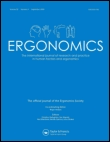
ERGONOMICS
Bridging the gap between people and their environments.ERGONOMICS is a premier journal that serves the dynamic fields of Human Factors and Ergonomics, as well as Physical Therapy, Sports Therapy, and Rehabilitation. Published by Taylor & Francis Ltd in the United Kingdom, this journal not only boasts a commendable impact factor but also holds a Q2 quartile ranking across its categories, underscoring its influence and academic rigor. With a convergence of significant research dating back to 1957, ERGONOMICS provides a multifaceted platform for the dissemination and discussion of innovative findings that enhance the interaction between people and their environments. Although the journal does not offer Open Access options, it remains a vital resource for researchers, professionals, and students seeking to deepen their understanding of ergonomic principles and applications. Positioned at the intersection of health and human behavior, ERGONOMICS is dedicated to advancing knowledge and promoting best practices in an era where the demand for safe and efficient work environments continues to grow.
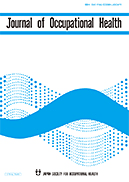
JOURNAL OF OCCUPATIONAL HEALTH
Connecting global minds for healthier work environments.JOURNAL OF OCCUPATIONAL HEALTH, published by WILEY, serves as a vital platform for sharing research and advancements in the field of public health, with a specific focus on occupational health and safety. With an impact factor that underscores its significance—ranking in the Q2 category of Public Health, Environmental and Occupational Health—this journal has established a reputation for excellence, reflected by its position in the 76th percentile of its category according to Scopus. This Open Access journal, available since 2018, ensures that valuable research findings are accessible to a global audience, enhancing collaboration and innovation in addressing occupational health challenges. Covering a wide array of topics from workplace safety to the impacts of environmental factors on worker health, the JOURNAL OF OCCUPATIONAL HEALTH invites researchers, professionals, and students to contribute and engage with the latest developments in the field, thereby fostering a healthier work environment for all.
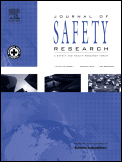
JOURNAL OF SAFETY RESEARCH
Exploring innovative strategies for risk management.The JOURNAL OF SAFETY RESEARCH, published by Pergamon-Elsevier Science Ltd, stands as a premier platform for scholarly discourse within the domain of safety, risk, reliability, and quality. With an esteemed impact factor and a strong ranking of #38 out of 207 in its category as per Scopus, this journal maintains a distinguished Q1 quartile status, reflecting its influence and significance in advancing safety research since its inception in 1969. Researchers, practitioners, and students alike will find a wealth of knowledge here as the journal explores critical aspects of safety in various contexts, highlighting innovative strategies and empirical findings that contribute to improved safety outcomes globally. Though it operates under a traditional access format, the journal’s extensive repository of articles ensures that vital information remains accessible to its readership. The JOURNAL OF SAFETY RESEARCH is not only a cornerstone for those within the safety engineering field, but also a vital resource for professionals seeking to enhance their understanding of risk management and quality assurance methodologies.
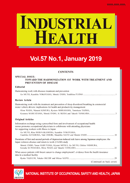
INDUSTRIAL HEALTH
Fostering Excellence in Public and Occupational HealthINDUSTRIAL HEALTH is a premier journal dedicated to the dissemination of innovative research in the fields of public health, environmental and occupational health, as well as toxicology and mutagenesis. Published by the National Institute of Occupational Safety and Health in Japan, the journal has been a critical resource for over six decades, covering essential topics from 1963 to the present day. With an impressive placement in the second quartile (Q2) of the Public Health, Environmental and Occupational Health category and a third quartile (Q3) in Health, Toxicology, and Mutagenesis, it is recognized for its significant contribution to advancing knowledge and improving practices within the industry. While not an open-access journal, INDUSTRIAL HEALTH offers researchers and students access to a wealth of knowledge through its rich archive of articles, fostering a deeper understanding of health and safety challenges in industrial settings. The journal’s dedication to high-quality research and its strategic role in promoting occupational safety make it an invaluable asset for professionals seeking to enhance health standards and safety protocols worldwide.
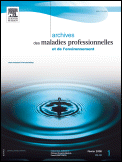
Archives des Maladies Professionnelles et de l Environnement
Innovating for Healthier Workplaces and EnvironmentsArchives des Maladies Professionnelles et de l'Environnement is a vital scholarly journal published by Elsevier Science Inc, focusing on the critical intersections of public health, environmental issues, and occupational health. With an ISSN of 1775-8785 and an E-ISSN of 1778-4190, this French-based journal serves as a platform for researchers, professionals, and students to explore contemporary challenges and advancements in these essential fields. Although it holds a Q4 ranking in the 2023 Scopus quartiles, it provides a unique opportunity for new contributions that can drive future research directions. The journal accepts a variety of article types, with the aim of spreading knowledge that can influence policy and improve practices in occupational health and environmental safety. As we approach the convergence of its publication years from 2004 to 2024, the journal remains committed to fostering a comprehensive understanding of the impact of work and environmental exposure on health, making it an important resource for anyone invested in these disciplines.
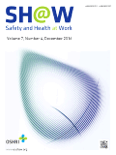
Safety and Health at Work
Driving change in public health and safety standards.Safety and Health at Work is a prominent academic journal published by Elsevier, dedicated to advancing the fields of safety research, public health, and occupational health. Since its inception in 2010, the journal has established a robust Open Access platform, allowing for a wide dissemination of high-quality research aimed at improving safety standards and health practices globally. Based in South Korea, the journal is housed at RADARWEG 29, 1043 NX AMSTERDAM, NETHERLANDS, and has garnered a notable reputation with an impressive ranking in various categories, achieving Q1 status in Safety Research and Q2 in related fields such as Public Health and Chemical Health and Safety. With an impact factor reflective of its influence—ranking within the top percentiles of Scopus in Safety and Chemical Engineering—the journal serves as an essential resource for researchers, professionals, and students committed to fostering safer and healthier workplace environments. The convergence of multiple disciplines enriches its contributions, making it a vital platform for innovation and collaboration in safety practices and policies.

International Journal of AEROSPACE Psychology
Advancing Human Factors in AerospaceInternational Journal of Aerospace Psychology is a premier publication dedicated to advancing the interdisciplinary field of aerospace psychology, addressing the cognitive, emotional, and behavioral aspects of human interaction with aerospace environments. Published by Taylor & Francis Inc., this journal occupies a pivotal position in the academic landscape with its Q2 ranking in Aerospace Engineering and Q3 rankings in Applied Psychology and Computer Science Applications, reflecting its commitment to high-impact research. With an ISSN of 2472-1832 and E-ISSN of 2472-1840, it is accessible through open access options, ensuring that cutting-edge research reaches a wide audience of researchers, practitioners, and students. Covering a broad scope from psychological implications in aerospace systems to educational methodologies in this domain, the journal spans converged years from 2017 to 2024. The Scopus rankings further reinforce the journal's significance, with notable standings within multiple categories, making it an essential resource for those at the intersection of aerospace, psychology, and technology.
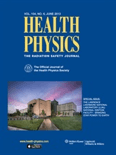
HEALTH PHYSICS
Exploring the Intersection of Health and PhysicsHEALTH PHYSICS is a leading academic journal dedicated to the study and dissemination of knowledge in the fields of radiology, epidemiology, and health toxicology. Published by Lippincott Williams & Wilkins, this esteemed journal has been a cornerstone of research since its inception in 1958, and it continues to foster important discussions and advancements in the discipline. With a notable impact factor and consistently ranking in the Q2 and Q3 quartiles across various categories in 2023, HEALTH PHYSICS serves as a vital resource for scholars, practitioners, and students seeking the latest insights and methodologies in the management of radiation exposure and its health implications. While the journal does not offer open access, it remains a critical platform for peer-reviewed articles that contribute to public health and environmental safety. The journal's comprehensive scope and historical significance underscore its importance in advancing knowledge and practices within its field, making it an essential read for anyone engaged in the multidisciplinary realms of health physics.
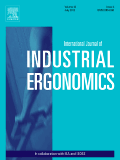
INTERNATIONAL JOURNAL OF INDUSTRIAL ERGONOMICS
Advancing human performance in industrial environments.INTERNATIONAL JOURNAL OF INDUSTRIAL ERGONOMICS, published by Elsevier, is a premier scholarly outlet dedicated to advancing the fields of human factors and ergonomics, as well as public health, environmental, and occupational health. With an impressive Q2 ranking in both relevant categories, this journal serves as a crucial forum for researchers and professionals seeking to share and access high-quality research aimed at optimizing human performance in industrial settings. The journal has been at the forefront of ergonomic research since its inception in 1986, fostering a rich discourse across disciplines and providing invaluable insights that bridge science and practice. While open access options are not available, the journal is widely accessible through institutional subscriptions. With a Scopus Ranking of #118/665 in Public Health and a #10/46 position in Human Factors, it caters to a diverse audience interested in the latest findings and applications in ergonomics, ensuring its relevance in a rapidly evolving field. Join a community dedicated to enhancing workplace safety and efficacy through rigorous research and innovative methodologies.

Medycyna Pracy-Workers Health and Safety
Advancing worker health through innovative research.Medycyna Pracy - Workers Health and Safety is a distinguished open-access journal published by the NOFER Institute of Occupational Medicine in Poland, dedicated to advancing the field of occupational health and safety. Established in 1953, this journal has evolved to provide a vital platform for researchers, practitioners, and students to disseminate their findings and insights regarding worker health and well-being. With a Q3 ranking in both Medicine (miscellaneous) and Public Health, Environmental and Occupational Health categories, it reflects a commitment to high-quality scholarship despite its recent Scopus percentile (35th). The journal's rich history encompasses issues from 1953 to the present, allowing for a comprehensive examination of trends and developments in the field. Since adopting an open-access model in 2013, Medycyna Pracy has broadened its reach, ensuring that critical research is freely available to anyone seeking to enhance workplace safety and health outcomes. By fostering dialogue among multidisciplinary professionals, this journal aims to impact policy, practice, and education in occupational health, making it an essential resource for anyone engaged in this vital area of study.